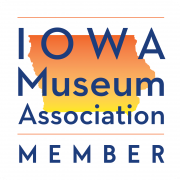Abstract Expressionism (1943 – 1955)
Abstract Expressionism is a type of non-objective painting with no recognizable form. While many African American artists took part in the movement, just as many kept to creating art as a means of storytelling and political messages. At this time the Civil Rights Movement was in full swing and politics was at the forefront in African Americans lives. https://www.moma.org/learn/moma_learning/themes/abstract-expressionism/
- Beauford Delaney (1901-1979) Delaney was the first Black proponent of abstract expressionism. He studied in Boston, and studied and exhibited in NYC during the Harlem Renaissance. Through the 1940s, Delaney suffered setbacks due to depression and financial issues. He began exhibiting again in the late 1940s with a more abstract style. In 1953, Delaney followed friend, author James Baldwin, to Paris to escape racial and sexual oppression. https://www.moma.org/artists/40994
Can Fire in Park, 1946 https://americanart.si.edu/artwork/can-fire-park-6619
- Alma Woodsey Thomas (1891-1978) – Thomas’ focus was non objective and color field painting. She lived her entire life in Washington D.C. and was part of the Washington Color School, a group of color field and hard-edge artists. Thomas chose to use nature as inspiration. “Through color I have sought to concentrate on beauty and happiness, rather than on man’s inhumanity to man.” Her later years brought more recognition of her work. She was the first African American woman to have a solo exhibition at Whitney Museum of American Art in 1972 https://americanart.si.edu/artist/alma-thomas-4778
Wind and Crepe Myrtle Concerto, 1973 Use of gestural abstraction through the use of short brushstrokes. Painting echos her love of nature and musical harmonies. https://americanart.si.edu/artwork/wind-and-crepe-myrtle-concerto-24028
- Sam Gilliam (1933-2022) Gilliam was a color field artist who received a BFA and MFA at the University of Louisville. He was also part of the Washington Color School with ALma Woodsey Thomas. Gilliam’s technique was staining or pouring paint onto a canvas and then folded the canvas so paint would stain through to other areas. He then shaped/draped the canvas on armature or wall creating a sculptural effect. In the 1970s, he created multi sided canvas frames and surfaces and intensified the color palette. Also used collage, assemblance, and quilting techniques. https://www.moma.org/artists/2161
Light Depth, 1969, Combination of painting, sculpture,and textile https://www.moma.org/collection/works/177634
- Barbara Chase-Riboud- (1939-present) – Chase-Riboud’s work represents figurative expressionism (creation of distorted figures and forms). Traveled to Europe on a Whitney fellowship to study direct wax casting. She returned to receive her MFA from Yale before moving back to Europe permanently. Case-Riboud is diverse in her creativity, also being a poet and published author. https://en.wikipedia.org/wiki/Barbara_Chase-Riboud
Malcolm X #3, 1969 – Polished bronze sculptures incorporating gold and black patinas with silk, wool, or cotton cords. Contrasting dull and polished, hard and soft, light and dark (yin/yang) Influenced by African headdresses. https://philamuseum.org/collection/object/105682



